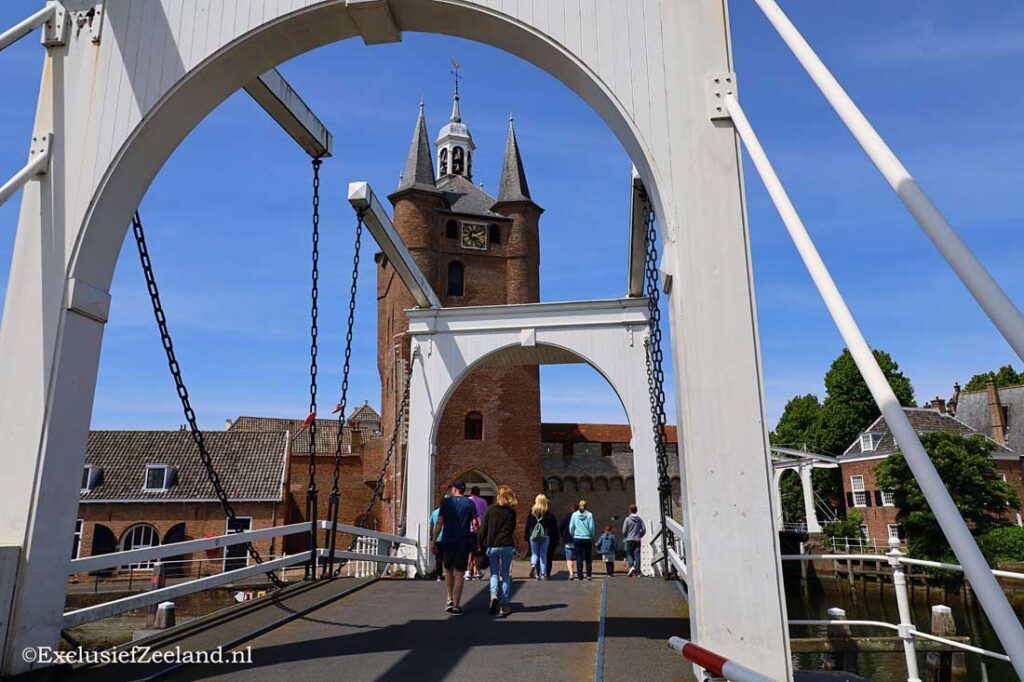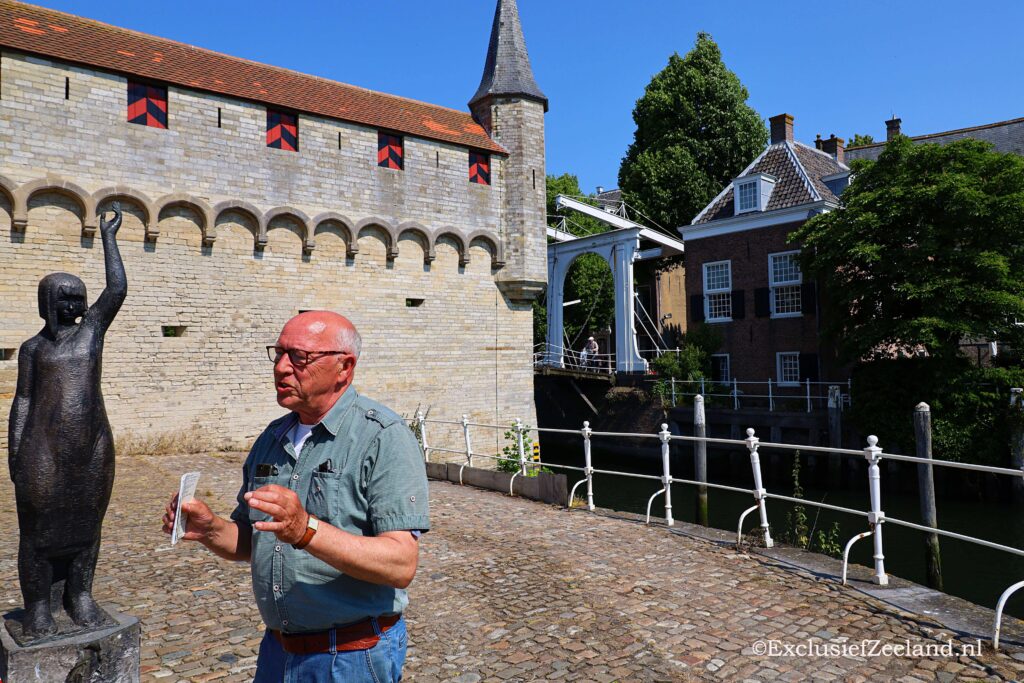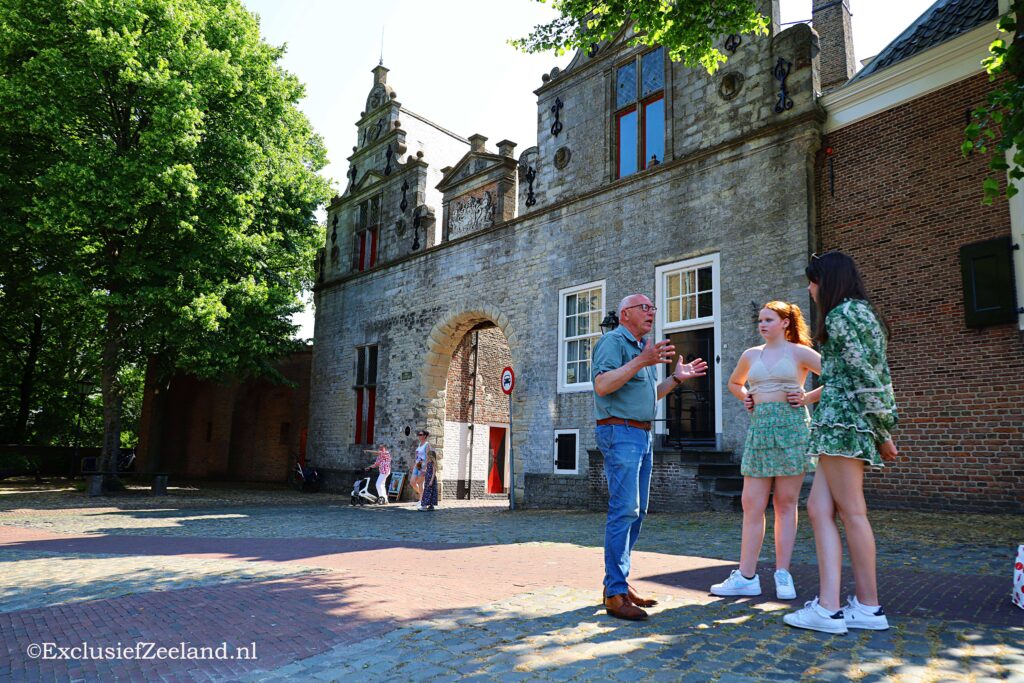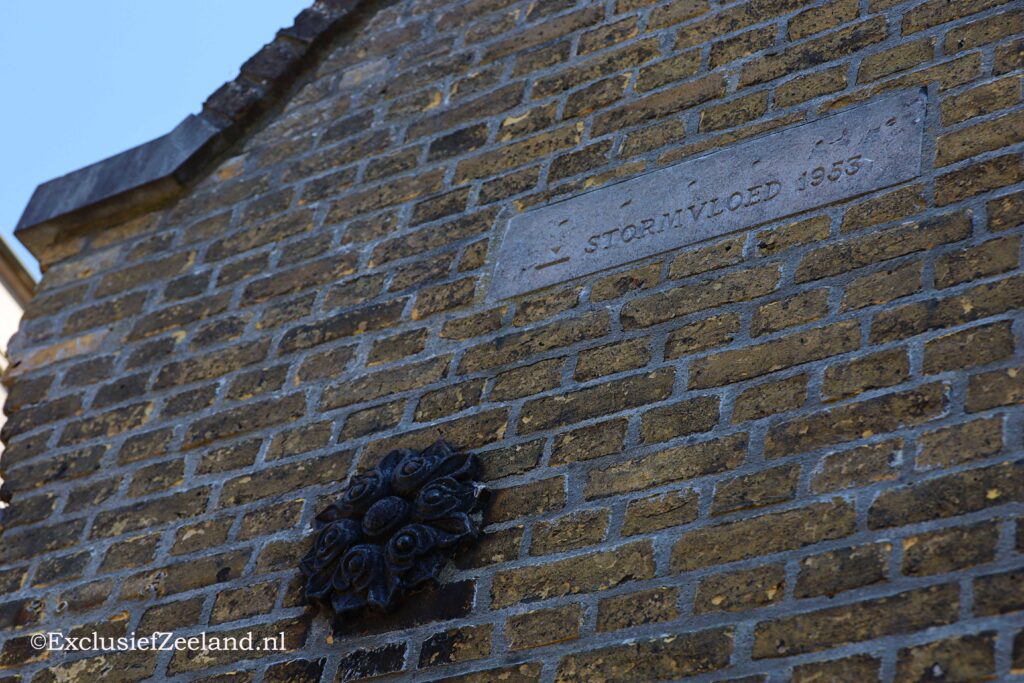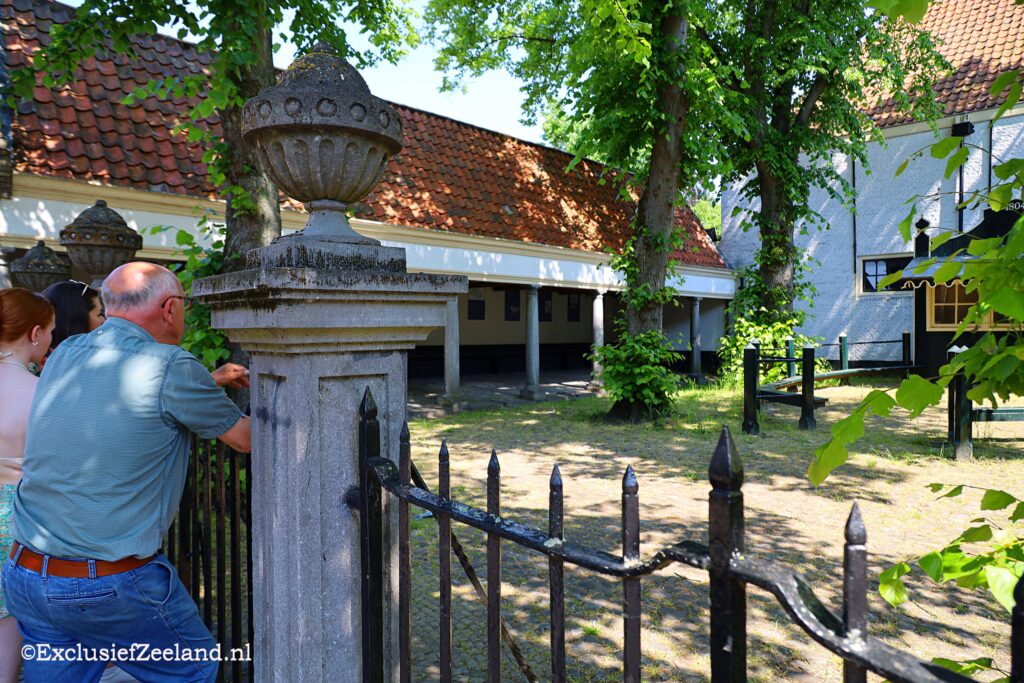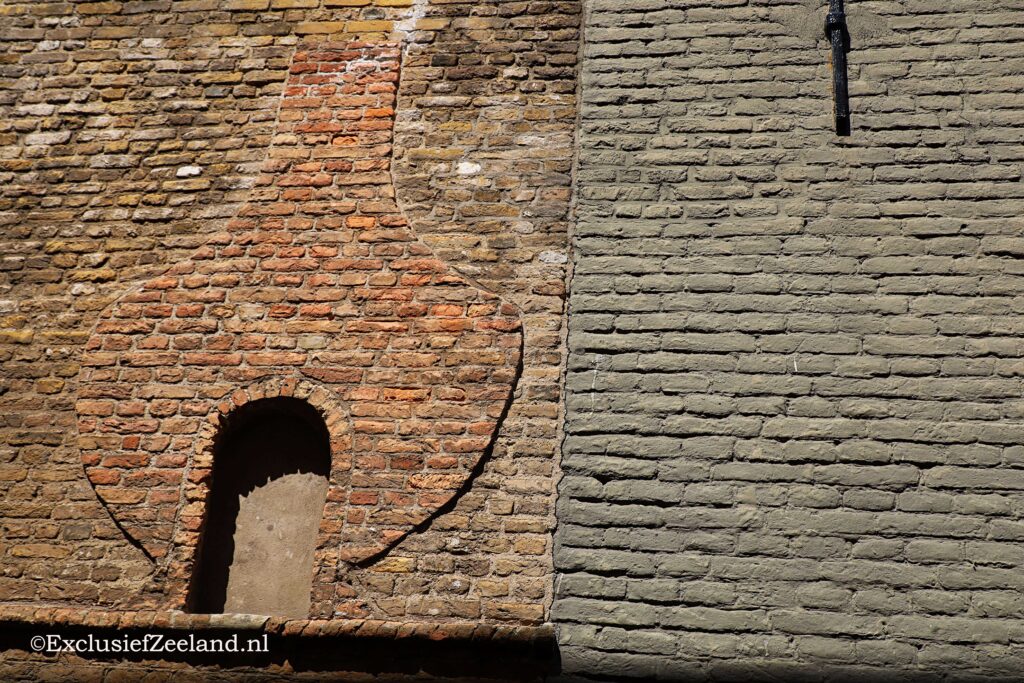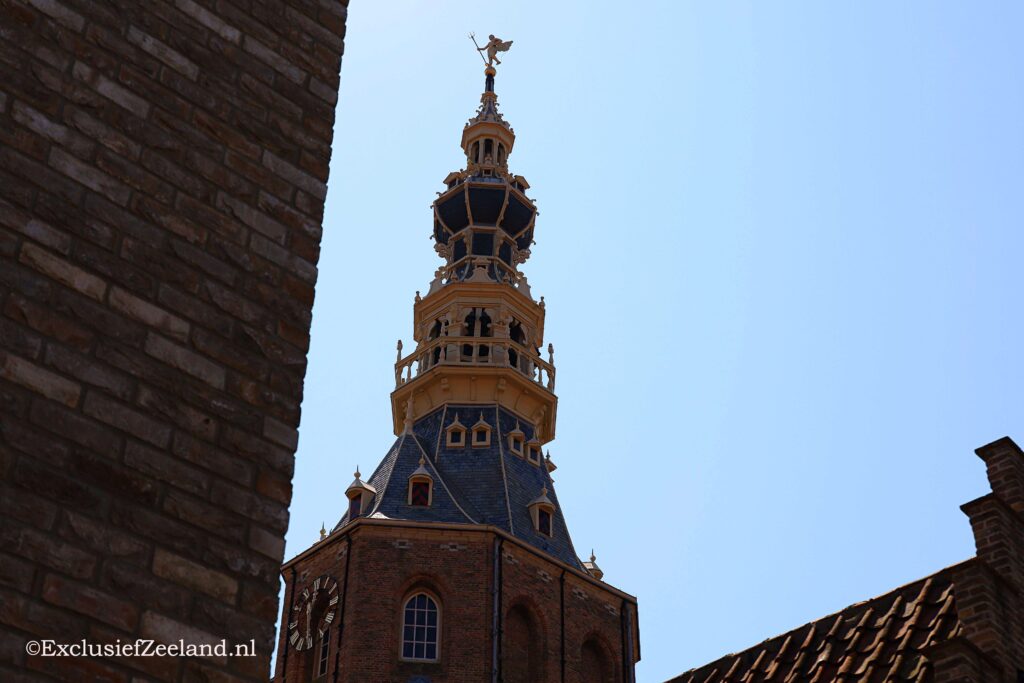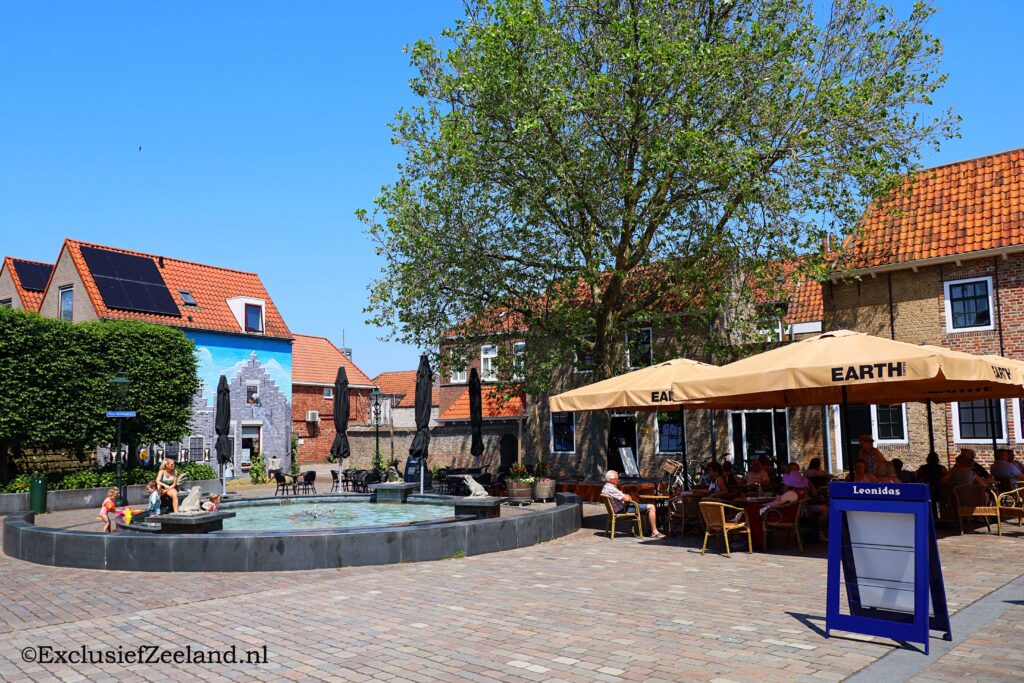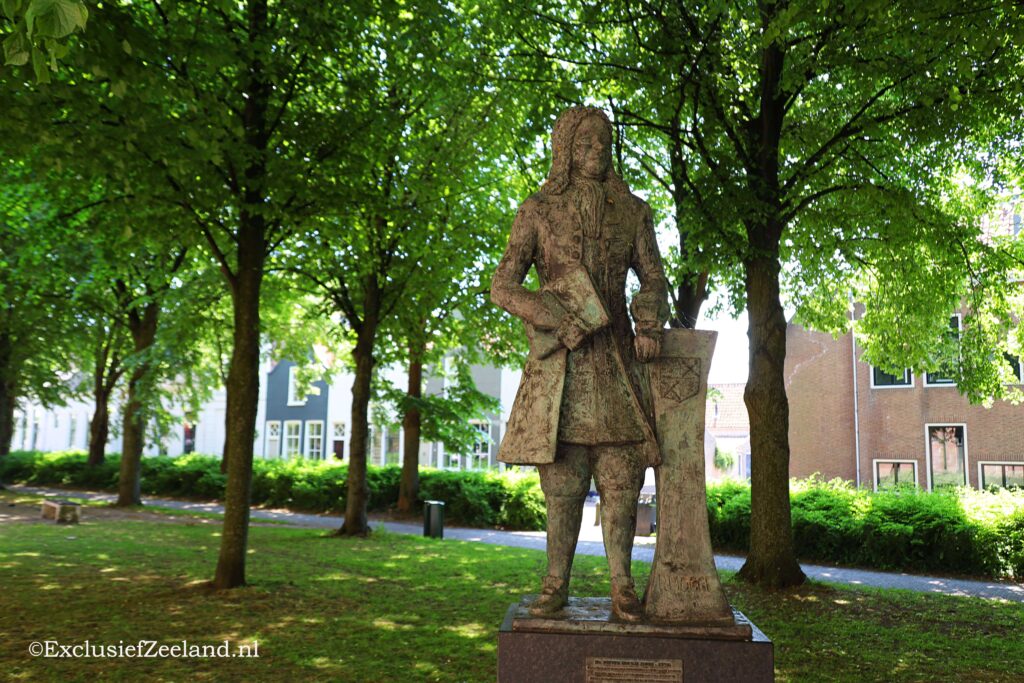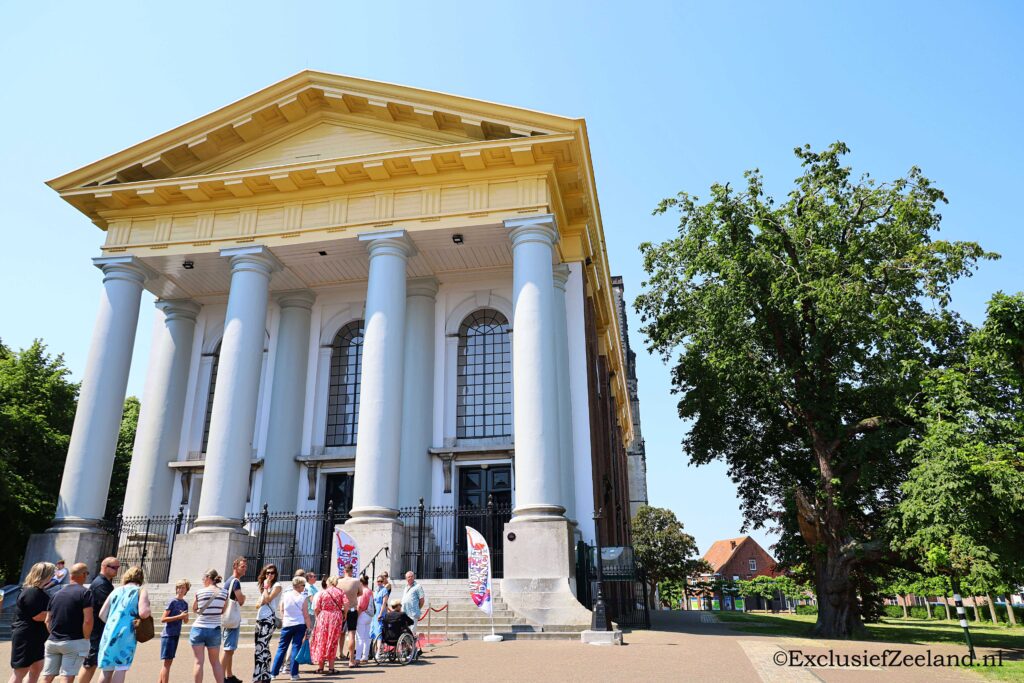Today I take my daughters with me on the tour, meeting up with our guide at the steps of P1 at 11:00. We turn out to be matched with city guide Simon and since we are the only ones waiting on the wide steps, we are easily found. Although Simon fits the description wise & grey, we immediately notice that he is young at heart and humour is his trump card. After a brief round of introductions, Simon starts talking about his love for Zeeland. Not so surprising since his great love is from there. Yet only in recent years has he taken the time to really immerse himself in history and we get to enjoy that today. It soon becomes clear to us why he is so enthusiastic about Zierikzee. After all, it is one of the few medieval towns in the Netherlands that has remained so well preserved. Nothing has changed for almost 600 years, and the city has no fewer than 568 monuments. “But why then?” I ask curiously.
Simon explains that Zierikzee’s most prosperous time was between 1200 and 1500 A.D. Zierikzee’s port was even more important than that of Amsterdam or Rotterdam during this period! Zierikzee actually got a head start in the Middle Ages on the prosperity that was coming for the Netherlands. The golden age followed but the gold did not reach Zierikzee. Indeed, it was overtaken by Rotterdam and Amsterdam, among others, and thus cut off from important trade routes. In fact, from 1750 to 1950, Zierikzee was very poor and perhaps that is what made Zierikzee lucky for its preservation. Because the lack of money meant that almost nothing changed and it was no longer a strategic city to fight hard for. So it may be that today we need little imagination to step back in time….
We start at the Noord- and Zuidhavenpoort and find a spot in the shade as it is a scorching hot day. Perhaps this is the most photogenic spot in Zierikzee. We stop for a moment at the flood memorial. How many times have I walked past this and looked at the anonymous woman? Today, I walk past her for the first time and discover her child seeking protection behind her skirts. Surely the text “tried but not broken” now takes on a different connotation. As we walk through, Simon points out Christóbal Mondragón’s sword that sits atop the North Harbour Gate. Mondragón was the Spanish commander who captured Zierikzee in the 80-year war and we listen to some interesting anecdotes.
As we walk towards the harbour square, Simon tells us about a very special doctor who once lived here: Job Baster. Besides being a doctor, he was a scientist, artist but also a goldfish breeder. He even turns out to be the man who introduced the goldfish to the Netherlands. To honour him, Zierikzee placed a statue in front of his house.
It turns out there are so many special places in Zierikzee that I must have walked right past dozens of times. Simon points out special masonry works, for instance, which all carry a story. But De Beuze with its blue ceiling also turns out to be special and then, with pride in his voice, he tells us the story about the founders of Omoda, who still live in Zierikzee. Our guide has so many stories to tell and we want to hear them all. So we are certainly not going to point out to him that time is already running out…. His enthusiasm for history is contagious and he even manages to hold my daughters’ attention. Every time their minds seem to wander, he asks them a question and each time he is sure they must have had the subject in question with history class. Simon keeps score of right answers and we laugh at the creative answers when we really have no idea.
We pass The Fish Market, Prison Gravensteen, Zierikzee’s oldest house “De Haene”, The Town Hall with neptune on its striking tower, Plein MontMaertre, The Dikke Toren and, of course, Zierikzee’s New Church. We learn that the Sint-Lievensmonsterkerk was once (1454) meant to underline Zierikzee’s prosperity and importance. 130 metres was to be the tower, making it higher and more imposing than Utrecht’s cathedral tower. As a result of various disasters and declining prosperity, construction of the tower stopped in 1510. This left the tower stuck at 62 metres. On the night of 6 October 1832, St Lievenskerk was destroyed by fire and was not rebuilt. The half-finished tower was preserved (today’s Dikke Toren) and a new church was built separately from the tower to what it is today. We resolve to climb the fat tower soon because it is not the pride of Zierikzee for nothing.
After a considerable run-out, our walk did come to an end and our thanks to Simon, we enjoyed ourselves immensely and came to appreciate Zierikzee even more. Mission accomplished! And actually, we think everyone who goes to Zierikzee (or lives there) should join Simon or one of his colleagues for an hour. But maybe that’s a bit high and of course we don’t want to overload the City Tours Zierikzee website but if you do go… Have fun in advance! 😉
Liefs,
Anna


